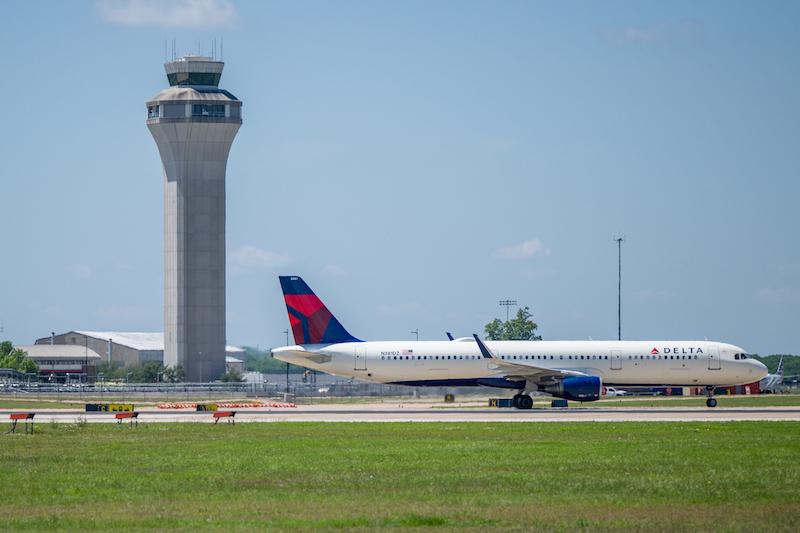Delta Air Lines Seeks To Fill Texas ‘White Space’ With Larger Austin Presence

Delta is aiming to expand its Texas network out of Austin-Bergstrom International Airport (above).
In a move aimed at having a stronger footprint in Texas, Delta Air Lines is growing its offering at Austin-Bergstrom International Airport (AUS) and adding two smaller-market Texas airports to its network.
AUS will become a connecting airport for Delta for the first time. “When we look at Texas, historically, that's been some white space on our route map,” Eric Beck, Delta’s managing director of domestic network planning, tells Aviation Week Network.
From April 22, 2024, Delta will start service from the Texas capital to both Midland International Air and Space Port in western Texas and McAllen International Airport in southern Texas. Both routes will be operated 3X-daily with dual-class regional jets.
“McAllen and Midland are the two largest metros in Texas not yet served by Delta,” Beck says. “We saw an opportunity to build out Austin and achieve a level of presence and critical mass so we’re able to efficiently add McAllen and Midland onto our route network, bring customers [from those markets] into Austin and then they can connect, whether it's to Atlanta, New York, Seattle, Amsterdam [served from AUS by Delta SkyTeam partner KLM] or beyond.”
Also on April 22, Delta will commence 3X-daily service between AUS and Tennessee's Nashville International Airport (BNA), also to be operated with a dual-class regional jet.
During its summer 2024 schedule, Delta plans to operate nearly 50 peak-day flights from AUS to 15 U.S. airports, including all of the carrier’s hubs. Taking into acocunt the new routes and added frequencies, Delta will offer 21% more capacity from AUS in July 2024 versus July 2023.
“You have access to our entire network from Austin,” Beck says. “It’s now becoming our gateway into smaller Texas communities. Obviously, not having a hub in Texas—unlike our competitors—we haven't served as many cities in Texas. When we looked at some of the largest cities that were not on the Delta route map, many of them are in Texas, and the two biggest were McAllen and Midland.”
Beck says AUS connects “to all of our hubs with good schedules and good level of frequencies.” He points to other key routes to non-hub leisure destinations such as Las Vegas and Orlando, Florida, adding: “We have enough critical mass of service to be able to use Austin to access interior Texas and then provide one-stop connectivity to all of our hubs and some other key cities around the country and around the world.”
Delta’s Austin push comes as rival American Airlines pulls back from what had been a post-pandemic push to make AUS a key network point with extensive nonstop connections. Now, 21 of 42 destinations (both year-round and seasonal) to which American has been flying from Austin will be dropped in early 2024.
Beck says Delta’s decision to boost AUS is “not about a competitor,” noting the carrier was moving to grow at AUS “prior to the pandemic … adding more and more cities over time. This has always been something that was in our plans and made sense for us.”
He says Delta views AUS as a growth market. “When we look at Austin and really across Texas, it's very favorable demographics,” Beck explains. “We see the amount of population shift into Austin, we see companies that are moving to Austin and expanding there. We see all that economic activity and as we've put in more and more service over time, we've been really pleased with the results.”
